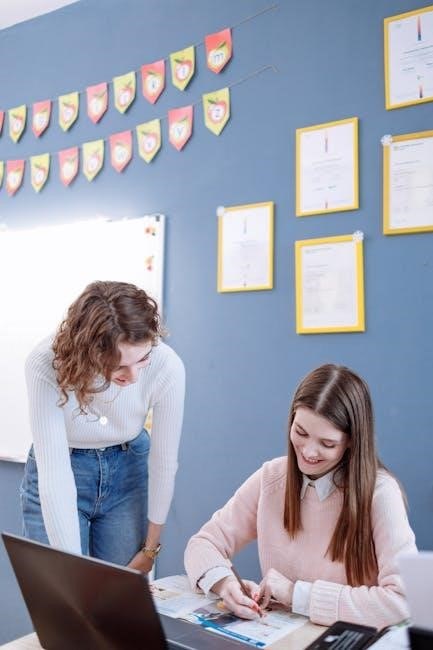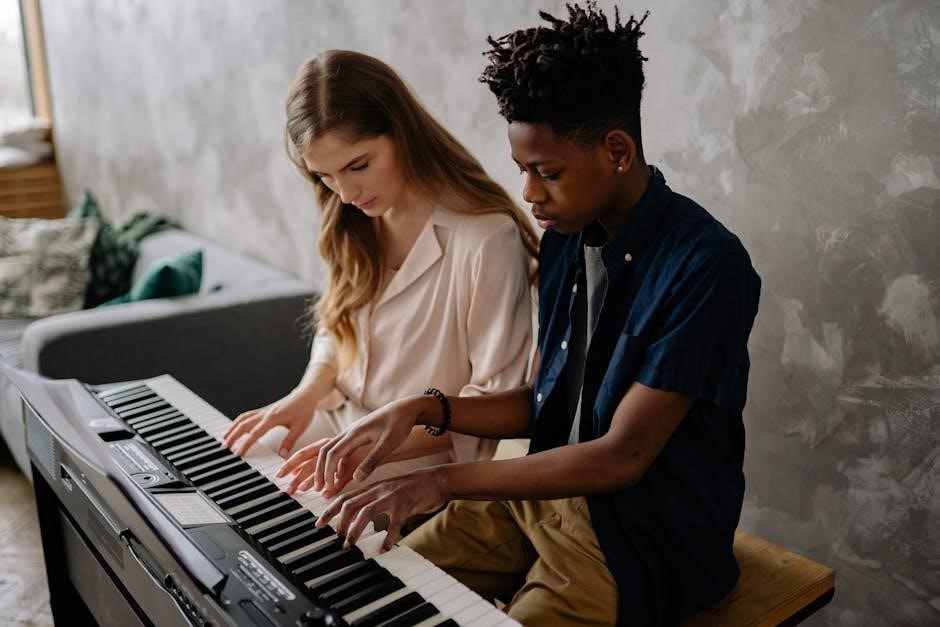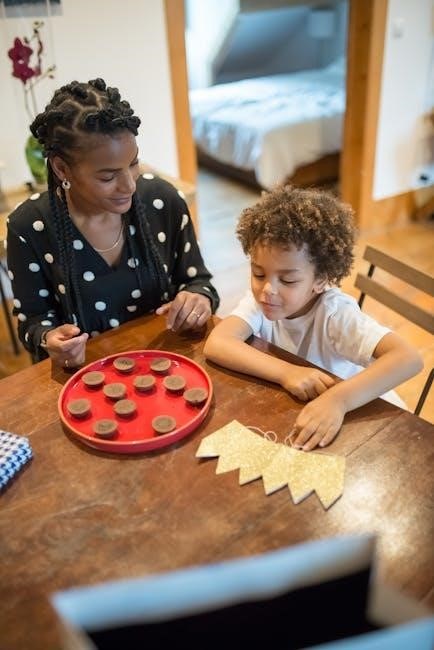Superlatives are a way to compare three or more things‚ highlighting the most extreme quality. They make language more expressive and engaging in everyday communication.
1;1 What Are Superlatives?
Superlatives are forms of adjectives or adverbs used to compare three or more things‚ identifying the one with the most extreme quality. For example‚ in “She is the tallest girl in the class‚” “tallest” is the superlative form of “tall.” Superlatives often end in “-est” (e.g.‚ “happiest”) or use “most” (e.g.‚ “most beautiful”). They help emphasize extremes‚ making language more expressive and precise. Regular superlatives follow predictable patterns‚ while irregular ones‚ like “best” (from “good”)‚ don’t. Mastering superlatives enhances communication skills and adds clarity to descriptions. Understanding their formation and usage is essential for effective English expression.
1.2 Importance of Superlatives in English Grammar
Superlatives play a crucial role in English grammar by enabling precise and vivid comparisons. They allow speakers and writers to highlight extremes‚ making communication more engaging and specific. For instance‚ saying “This is the best meal I’ve ever had” adds clarity and emphasis. Superlatives are essential for expressing opinions‚ preferences‚ and distinctions‚ making them invaluable in both informal and formal contexts. They enhance the richness of language‚ enabling effective expression of ideas and emotions. Mastering superlatives is key to fluent and impactful communication‚ as they help convey intensity and emphasis in descriptions and comparisons.
Regular Superlative Forms
Regular superlatives are formed by adding -est to adjectives‚ creating clear and straightforward comparisons. This consistent method simplifies expressing the highest degree of a quality.
2.1 Adding “-est” to Adjectives
Add the suffix -est to short adjectives to form superlatives‚ such as happy → happiest. This rule applies to most adjectives with one or two syllables‚ ensuring clarity and correctness.
2.2 Irregular Superlative Forms
Some adjectives have irregular superlative forms that don’t follow the -est rule. For example‚ good → best and bad → worst. These forms must be memorized as they don’t fit a predictable pattern. Irregular superlatives often come from Old English roots or have unique historical developments. They are common in everyday language‚ so recognizing them is essential for clear communication. Learners should practice these forms through repetition and real-life examples to build familiarity and confidence in their usage. Mnemonics or flashcards can also help in retaining these irregular superlatives effectively.
Interactive Activities for Learning Superlatives
Engage students with group work‚ pair activities‚ and digital tools to practice superlatives in a fun‚ collaborative environment. Real-life applications also enhance learning and retention effectively.
3.1 Group Work and Pair Activities
Group work and pair activities are effective ways to engage students in learning superlatives. For example‚ the “Name Game” activity involves students describing each other using adjectives starting with the same letter as their names. Pair activities like creating superlative sentences together encourage collaboration and immediate feedback. These interactive methods make learning superlatives fun and practical‚ allowing students to apply the rules in real-life contexts. Such activities also foster communication and teamwork‚ making grammar lessons more dynamic and memorable for learners of all ages.

3.2 Using Digital Tools for Practice

Digital tools offer engaging ways to practice superlatives. Online quizzes‚ interactive exercises‚ and educational videos provide hands-on learning experiences. Platforms like Kahoot! and Quizlet allow students to test their knowledge through games and activities. Interactive exercises‚ such as drag-and-drop tasks or multiple-choice quizzes‚ make practice enjoyable. Videos and tutorials explain rules clearly and demonstrate examples. These tools also provide immediate feedback‚ helping students identify and correct mistakes. Digital resources are accessible anytime‚ making them ideal for self-paced learning. They cater to different learning styles‚ ensuring students stay motivated and confident in mastering superlatives. Regular practice with these tools enhances retention and fluency in using superlatives effectively.
3.3 Real-Life Applications of Superlatives

Superlatives are widely used in real-life situations to emphasize extremes. In social media‚ people often describe experiences with phrases like “the best day ever” or “the most amazing view.” Product reviews frequently use superlatives to highlight top features‚ such as “the fastest smartphone” or “the tastiest restaurant.” Travel guides recommend “the highest mountain” or “the most beautiful beach.” Even in daily conversations‚ superlatives add flavor‚ like saying‚ “This is the funniest movie I’ve ever seen!” Using superlatives makes communication vivid and engaging‚ helping to convey strong emotions or standout qualities in various contexts.
Tools and Resources for Teaching Superlatives

Interactive tutorials often include online quizzes‚ educational videos‚ and engaging activities. These tools provide practical exercises and real-life examples‚ making learning superlatives fun and effective for students.
4.1 Online Quizzes and Worksheets
Online quizzes and worksheets are excellent tools for practicing superlatives. They provide interactive exercises with immediate feedback‚ helping learners identify and correct mistakes. These resources often include fill-in-the-blank activities‚ multiple-choice questions‚ and matching games. Worksheets can be downloaded for offline use‚ while online quizzes offer real-time scoring and progress tracking. Many platforms cater to different skill levels‚ ensuring learners can start from basic concepts and gradually move to more complex superlative structures. These tools are accessible anytime and anywhere‚ making them ideal for self-paced learning and reinforcing grammar rules effectively.
4.2 Educational Videos and Tutorials
Educational videos and tutorials are powerful tools for teaching superlatives. They provide visual and auditory learning experiences‚ making complex grammar rules more accessible. Many videos include examples‚ sentences‚ and interactive elements like pauses for practice. These resources cater to different learning styles‚ engaging visual and auditory learners effectively. Platforms like YouTube and educational websites offer a wide range of tutorials‚ from basic to advanced levels. Teachers can incorporate these videos into lessons‚ while learners can use them for self-study. They often combine humor‚ animations‚ and real-life scenarios to make learning superlatives fun and memorable‚ ensuring better retention and understanding of the concept.

Assessing Progress in Superlative Usage
Assessing progress involves regular quizzes‚ tests‚ and peer evaluations. These methods ensure learners understand and correctly use superlatives‚ providing feedback for improvement.
5.1 Quizzes and Tests
Quizzes and tests are essential for assessing learners’ understanding of superlative usage. They help identify strengths and areas needing improvement. Regular online quizzes with multiple-choice questions or fill-in-the-blank exercises reinforce learning. Tests can include sentence completion tasks or identifying correct superlatives in context. Interactive digital tools‚ such as Kahoot! or Quizlet‚ make assessments engaging. Timed tests simulate real-life scenarios‚ enhancing time management skills. Immediate feedback from these tools allows learners to track progress. Quizzes and tests not only evaluate knowledge but also build confidence in using superlatives effectively in everyday communication. They provide a clear measure of mastery and guide future practice.
5.2 Peer Evaluation and Feedback
Peer evaluation and feedback are valuable tools in learning superlatives‚ fostering active engagement and collaboration. By reviewing each other’s work‚ students gain diverse perspectives and insights‚ enhancing their understanding. This method encourages learners to communicate effectively and explain their reasoning‚ reinforcing their grasp of superlatives. Constructive feedback is crucial; peers should highlight correct usage and politely point out errors‚ such as incorrect forms like “bestest.” Digital tools like Google Docs facilitate this process‚ allowing easy sharing and commenting. Engaging in peer evaluation not only aids the recipient but also deepens the evaluator’s knowledge‚ creating a mutually beneficial learning environment that promotes growth and understanding.

Best Practices for Teaching Superlatives
Use interactive content and real-life examples to make learning engaging. Provide clear rules and examples‚ and encourage practice through group activities and digital tools for better retention.
6.1 Engaging Students with Interactive Content
Engage students with interactive activities like group work‚ pair exercises‚ and digital tools. Use online quizzes‚ educational videos‚ and real-life applications to make learning superlatives fun and practical. Incorporate games and role-playing to encourage participation and creativity. Provide immediate feedback through interactive exercises to track progress and reinforce understanding. By making lessons dynamic and relevant‚ students stay motivated and retain information better. These methods create a collaborative and enjoyable learning environment‚ helping students master superlatives effectively.
6.2 Providing Clear Examples and Feedback
Providing clear examples and feedback is essential for effective learning. Use practical examples to demonstrate how superlatives work in real-life contexts. For instance‚ compare sentences like “The tallest building in the city” to illustrate correct usage. Offer immediate feedback during activities to help students identify and correct mistakes. This guidance ensures they grasp the concept thoroughly. Clear explanations and constructive feedback build confidence and improve understanding; By breaking down complex rules into simple‚ digestible parts‚ students can apply superlatives accurately in their own sentences. Regular feedback also helps track progress and address areas needing improvement.

No Responses